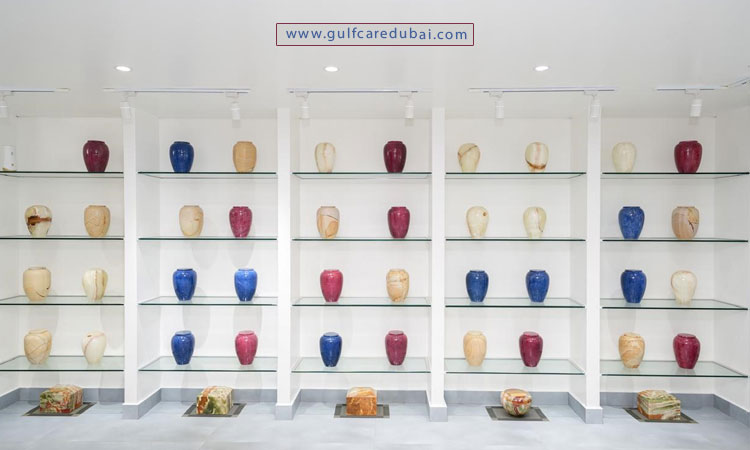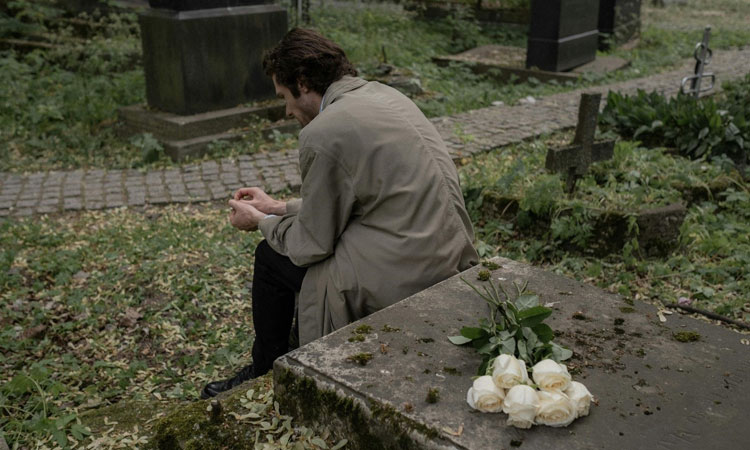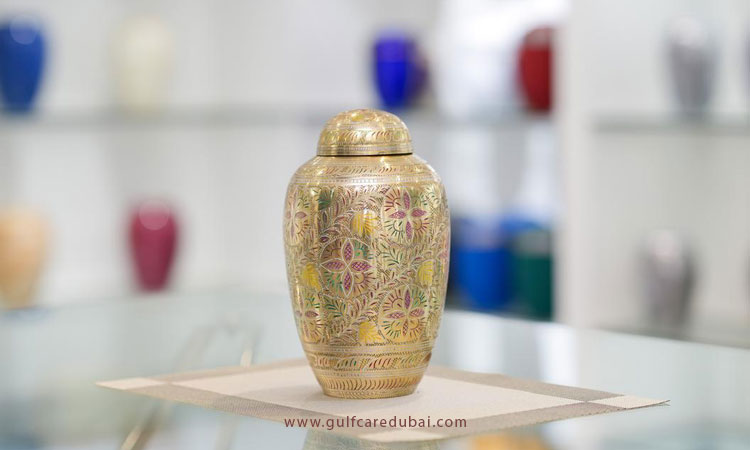In life’s journey, it is very important to understand all the aspects of end-of-life care, especially during a difficult time. It also includes the selection of the best cremation services. Choosing cremation involves the selection of a reputable cremation provider and understanding the best cremation service options.
This comprehensive guide is designed to help you understand the steps involve in planning a dignified cremation. It covers choosing cremation services, planning the memorial service and what to expect before, during, and after the cremation process. This guide is useful whether you are pre-planning your own cremation or arranging one for a loved one.
What is Cremation?
Cremation is the process of the final disposition of the body, into its basic elements, through the exposure to intense heat and evaporation. This process takes place in a specially designed furnace known as a cremation chamber or retort.
Explore the dignified cremation process in the UAE, including the step-by-step procedure and important eligibility requirements for the only type of cremation permitted.
The Cremation Process Explained Step-by-Step
- Identification and Authorization: The first step of cremation is to verify the identity of the deceased and to obtain the approval to proceed with cremation. This normally includes paperwork to ensure that all legal requirements are met.
- Preparation of the Body: The body undergoes preparation that includes washing, dressing, and removing any items like jewelry or medical devices that the family wishes to retain. Prosthetics and mechanical devices are also removed to avoid complications during the standard cremation process.
- Placement in the Cremation Chamber: The body is placed in a combustible container which is then transferred to the cremation chamber. The chamber is lined with fire-resistant bricks that can withstand temperatures up to 2000 degrees Fahrenheit.
- Cremation: The body is subjected to temperatures ranging from 1400 to 2000 degrees Fahrenheit. The strong heat reduces the body to bone fragments and gases which are then released through an exhaust system.
- Processing of Remains: After cremation, the remains are cooled down. Any metals or other residue are taken out. The bone fragments are transformed into finer particles known as “ashes” even though they technically remain bone fragments.

You qualify for cremation services in the UAE if:
- You are a non-Muslim resident
- You provide proper identification documents
- You have the Visit or Resident Visa of deceased
- You obtain clearance from your embassy
Individual Cremation – The UAE Standard
Individual (private) cremation is the only option available in the UAE. Your loved one is cremated alone in the chamber. You receive only their ashes, with no mixing of remains.
With this exclusive cremation service, you can:
- Keep all ashes of your loved one
- Hold meaningful memorial ceremonies
- Choose where to place the remains
- Honor your cultural and religious traditions
We offer these services through licensed facilities in Jebel Ali (Dubai), Sharjah, and Al Ain. Call us anytime. We are available 24/7 to guide you with compassion and professional care.
Legal Process: How Cremation Works in Dubai
The cremation process in Dubai follows strict legal requirements, particularly for expatriate families. While cremation is not permitted for Muslims under Islamic law, non-Muslim residents can arrange cremation with proper approvals. Our structured process includes:
- Transport and collection: The deceased is respectfully transported from the place of death
- Death Notification & death certificate: Obtaining the official death notification from the hospital/clinic and the death certificate issued by the Ministry of Health
- Document preparation: Collecting required legal documentation such as passport, Emirates ID copies & police clearance certificate
- Translation and attestation: Converting documents to Arabic and getting them officially verified
- Embassy coordination: Working with your country’s embassy to obtain a No Objection Certificate (NOC)
- Cremation permit application: Applying for official approval from Dubai Municipality
- Scheduling and completion: Arranging the cremation at Jebel Ali Crematorium
- Handover or Ashes repatriation: Receiving the ashes or arranging for their transport to your home country
Coppola Funeral Services works closely with Dubai authorities and handles these steps on your behalf, allowing you to focus on remembering your loved one.
Crematorium Facilities Across the UAE
Crematorium facilities are available in Dubai, Al Ain (near Abu Dhabi), and Sharjah. Families from any emirate can access these cremation services.
- Dubai Crematorium: Main facility serving all emirates
- Al Ain Crematorium: Convenient option for Abu Dhabi residents
- Sharjah Crematorium: Local facility for northern emirates
We handle all paperwork, permits, and transportation to any crematorium location, making the process simple for your family regardless of which emirate you live in.
Planning a Cremation
When you are planning the cremation in Dubai, it is important to approach the process with respect and thoughtfulness, especially for expatriates residing in the UAE who may be handling arrangements from a distance. Expatriate cremation in UAE often involves additional legal and logistical considerations.
How do I choose a cremation service provider?
To honor the memory of a loved one with dignity, you need to select the right cremation provider in Dubai, or other part of the UAE. Start with the research of a local provider of best cremation services or a reputable funeral home. You can check online resources, and recommendations from friends, family or community members. Reviews can also provide valuable insights.
Make sure the provider is licensed and inquire about their cremation practices including their collaboration with crematories and their role as a funeral home. During this difficult time it’s essential to ask about their policies, practices and the expertise of their staff. Cremation service providers should be transparent about cremation cost & their services and willing to answer all your questions.

Planning the Best Cremation Services
After Selecting the best cremation services provider, the next step is to plan the arrangements. If you are pre-planning the cremation for yourself, discuss your wishes with your family. Document your choices. For immediate needs, coordinate with the funeral director to understand the timeline , including obtaining the death certificate, and what you need to do.
Discuss types of best cremation services, such as direct cremation services or traditional cremation with a funeral service or memorial service. Each type has its procedures and costs involved. It’s important to select one that fits your preferences and budget.
Financial Considerations
Cremation can be more affordable option than traditional burial; however expenses can vary. Common costs include the cremation documentation, cremation permit Dubai, traditional funeral service, urn, and optional memorial service. Consider the following to manage these costs effectively:
- Budgeting: Set aside funds for the cremation expenses to reduce financial stress.
- Pre-Paying: Think about pre paying for services to lock in rates and avoid price increases.
- Seek Financial Assistance: Look into options like insurance, government benefits, or community fundraising to help cover expenses.
- Compare Prices: Request cost estimates from providers to compare and ensure you’re receiving the best value.
For UAE expats, it is advisable to understand both local and home country regulations regarding cremation, funeral home services and repatriation of remains. It is important to know all the cremation legal requirements UAE.
By carefully selecting a provider, planning cremation arrangements and handling financial matters thoughtfully you can ensure a dignified and smooth process during this difficult period.
Aftercare

What to Do with Cremated Remains
Choosing what to do with cremated remains is a deeply personal choice that honors the wishes of the deceased while meeting the family’s needs. Here are some options to consider:
- Storage in Urns: You can choose to keep the ashes in the cremation urns within your home. Many families choose durable and visually appealing urns as a memorial.
- Cemetery Arrangements: Some families choose to place the urn in a columbarium niche or bury it in a cremation plot at a cemetery. Certain cemeteries offer scattering gardens for those who prefer a natural dispersion.
- Scattering Ashes: Scattering ashes is another option that allows you to honor the deceased by choosing a meaningful location such as a favorite park or over water. It’s important to follow regulations when scattering ashes.
- Memorial Options: Cremated remains can be transformed into various memorials such as reef structures in the ocean, memorial jewelry, or even mixed into concrete for unique sculptures.
Grief and Coping After a Loss
Dealing with grief after losing someone is an individual journey that differs for each person. Here are some strategies to help navigate through this time

- Accept Your Grief: It’s normal to go through a range of emotions like sadness, anger or confusion, especially during this difficult time. Allowing yourself to experience these feelings is a part of the healing process.
- Talk About Your Feelings: Don’t hesitate to share your grief with friends and family. Seek support from a grief counselor, if required. Talking about your emotions can bring solace and aid in your healing journey.
- Maintain Routine: Maintaining your activities can help you feel a sense of normalcy and stability.
- Plan for Triggering Moments: Special occasions like anniversaries and holidays may bring feelings of loss. Planning ahead on how to manage these moments can be helpful.
- Self-Care: It is important to take care of your physical and mental health. Engage in activities that bring you comfort and peace.
- Postpone Major Decisions: It’s advisable to postpone major life decisions during the grieving process, as emotions can cloud your judgment.
- Help Others: Supporting others who are also mourning can help you in your healing journey.
- Celebrate the Life of Your Loved One: Remembering the good times and celebrating the life of your loved one can be a way to honor them and find solace.
Conclusion
In this guide we have explored the details of cremation, providing an overview starting from the initial steps, to the post care phase, specifically designed for expatriates residing in the UAE. This exploration has emphasized the significance of being well-informed and prepared, especially during a difficult time, when navigating the process of honoring a loved one’s memory through cremation.
As you move forward, it explains the steps involved in cremation, the different types available, and how cremation can impact the environment. This will help you make a decision that honors your loved one and respects your family’s wishes. The guide also acknowledges the importance of dealing with grief and offers strategies for managing those emotions. Additionally, understanding the role of a funeral home in the cremation process UAE is crucial. Whether you need to choose a funeral home or understand its services, this guide will assist you in making informed decisions during this challenging period.


